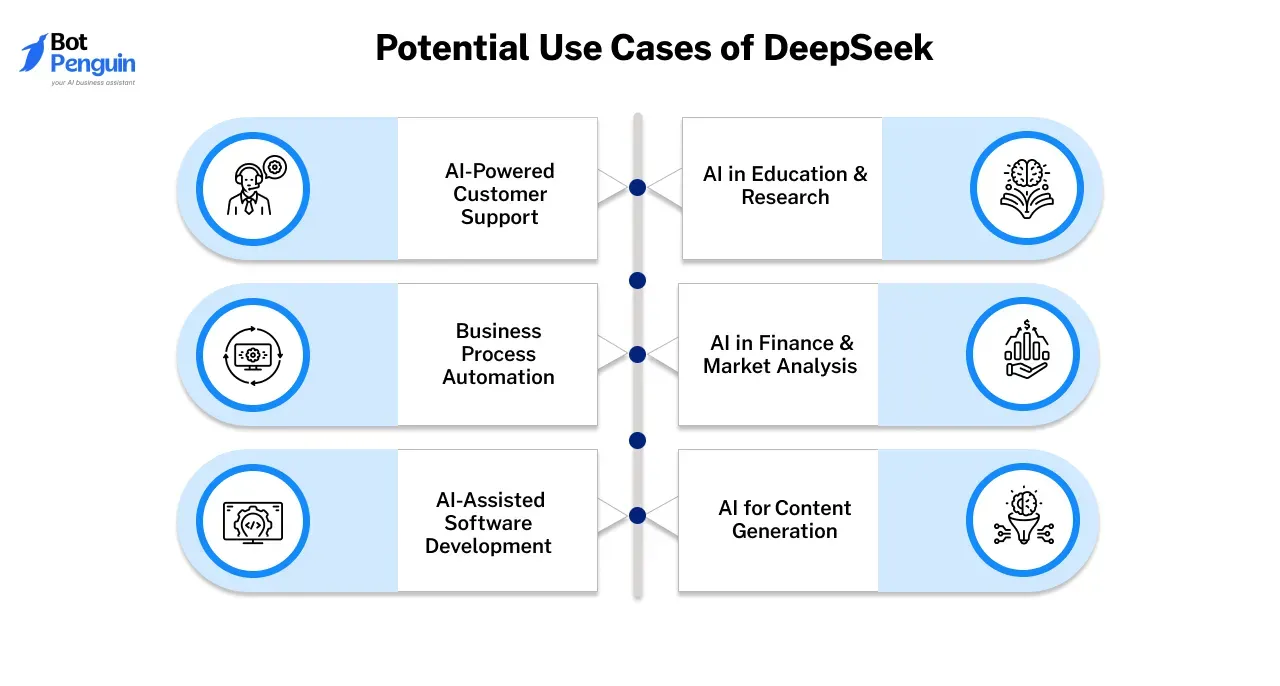As open-source AI models gain traction across industries, DeepSeek has emerged as a powerful suite of tools for tasks ranging from code generation to vision-language processing. With its rapid adoption by developers and researchers, a key question arises: can DeepSeek be legally and effectively used in commercial applications? Understanding the licensing terms and usage rights of these models is critical for startups, enterprises, and software vendors looking to integrate AI into their products. This article explores the commercial viability of DeepSeek and what businesses need to consider before deployment.
Understanding DeepSeek’s Licensing
DeepSeek’s Open-Source Foundation
DeepSeek is released as an open-source project, empowering developers with access to advanced AI models without proprietary restrictions. This transparency allows for greater customization, collaboration, and innovation across research and commercial environments.
Licensing Types: Apache 2.0, MIT, and Custom Agreements
Different DeepSeek models may be distributed under varying licenses such as Apache 2.0, MIT, or DeepSeek-specific terms. Each license carries its own permissions, limitations, and requirements, particularly concerning redistribution and commercial usage.
The Importance of Reviewing Each Model’s License
Because licensing terms may differ between models or versions, it is essential to examine the license associated with each DeepSeek release. Businesses must ensure compliance to avoid legal or operational risks when integrating these models into commercial solutions.
Models Available and Their Usage Terms
DeepSeek-Coder: Licensing and Commercial Use
DeepSeek-Coder is designed specifically for software development tasks, including code completion, debugging, and generation across multiple programming languages. It is typically released under a permissive license (such as Apache 2.0), which allows for commercial use, modification, and redistribution. However, users should always verify the exact license version on the model’s repository to ensure compliance.
DeepSeek-VL: Vision-Language Capabilities
DeepSeek-VL integrates visual and textual understanding, making it suitable for applications such as automated image captioning, document analysis, and visual Q&A systems. While the model is open-source, its usage in commercial products must align with the license conditions—especially if used in consumer-facing platforms or for monetized services.
DeepSeek-LLM: General-Purpose AI for Business Applications
DeepSeek-LLM is a versatile language model that can be integrated into chatbots, search engines, writing assistants, and more. Its broad applicability makes it attractive for commercial solutions. Like the other models, its license generally supports commercial deployment, but it’s important to confirm any limitations, particularly for large-scale enterprise use.
Usage Restrictions and Ethical Considerations
DeepSeek models are open-source, some licenses may include usage restrictions related to:
- Military or defense applications
- Surveillance and privacy-sensitive deployments
- Harmful or unethical use cases
Organizations should conduct a thorough legal review and consider ethical guidelines when deploying AI models commercially, particularly in regulated industries or high-stakes environments.
Commercial Use Case Examples
SaaS Platforms Enhancing Developer Productivity
Software-as-a-Service (SaaS) platforms can integrate DeepSeek-Coder to offer intelligent code suggestions, auto-completion, and debugging assistance. This helps development teams accelerate workflows, reduce errors, and improve overall code quality.
AI-Driven Customer Support Solutions
By leveraging DeepSeek-LLM, businesses can power AI chatbots that handle customer inquiries with natural, human-like responses. These bots can scale support services, reduce response times, and operate 24/7 without compromising quality.
Vision-Enhanced Applications in Media and Accessibility
Applications that require image understanding such as captioning tools, accessibility apps, or content moderation systems can benefit from DeepSeek-VL. Its multimodal capabilities allow seamless interpretation of images and text in real time.
Driving Innovation Across Industries
DeepSeek’s open-source accessibility and high performance make it a valuable tool for companies seeking to innovate without the overhead of proprietary models. Its versatility supports diverse use cases, from education and e-commerce to healthcare and finance.
Considerations Before Deployment
Perform Thorough Due Diligence
Before integrating DeepSeek into a commercial product, it’s essential to carefully review the licensing terms associated with the specific model you plan to use. Although many DeepSeek models are open-source, their usage rights may vary. Pay close attention to clauses related to distribution, modification, and commercial use to avoid potential legal issues.
Seek Legal Counsel
Engaging a legal advisor with expertise in software licensing is strongly recommended. A professional review will help ensure that your intended use of DeepSeek complies with all relevant legal and contractual obligations, minimizing the risk of intellectual property disputes or license violations.
Prioritize Privacy and Data Compliance
If DeepSeek is used in applications involving user data especially in sectors like healthcare, finance, or education it’s critical to implement strong data protection measures. Ensure your AI integration aligns with global data privacy standards such as GDPR, HIPAA, or CCPA. Secure data handling, anonymization, and responsible AI practices are essential for user trust and regulatory compliance.
Alternatives and Comparisons
How Does DeepSeek Compare to Leading AI Models?
Explore how DeepSeek stacks up against other prominent models in the AI landscape, including:
- OpenAI’s GPT-4: A highly capable commercial model known for its performance, but with usage fees and closed licensing.
- Meta’s Code Llama: An open-source model optimized for code generation, widely adopted in development environments.
- Mistral: A fast-growing open-source model praised for efficiency and multilingual capabilities.
Pros and Cons of Using DeepSeek for Commercial Applications
Pros:
- Open-source availability (depending on the specific model).
- Strong performance in both general and specialized tasks (e.g., coding, vision-language).
- Active community and growing ecosystem.
Cons:
- Licensing must be carefully reviewed for each model.
- May require technical setup and hosting infrastructure.
- Commercial support and documentation may not be as robust as enterprise-grade providers like OpenAI.
Conclusion
Conclusion, DeepSeek offers a compelling opportunity for commercial use, thanks to its open-source accessibility and competitive performance across various AI tasks. However, successful integration into commercial products requires a careful review of each model’s licensing terms to ensure compliance. With proper due diligence and legal clarity, businesses can leverage DeepSeek models such as DeepSeek-Coder or DeepSeek-VL to build innovative, AI-powered solutions. As the landscape of open-source AI evolves, staying informed about updates and usage rights is essential for responsible and effective commercial deployment.

